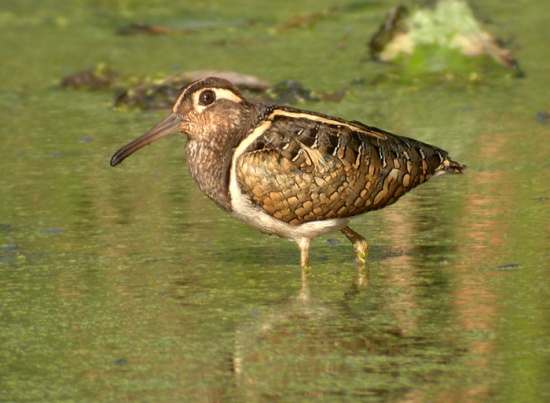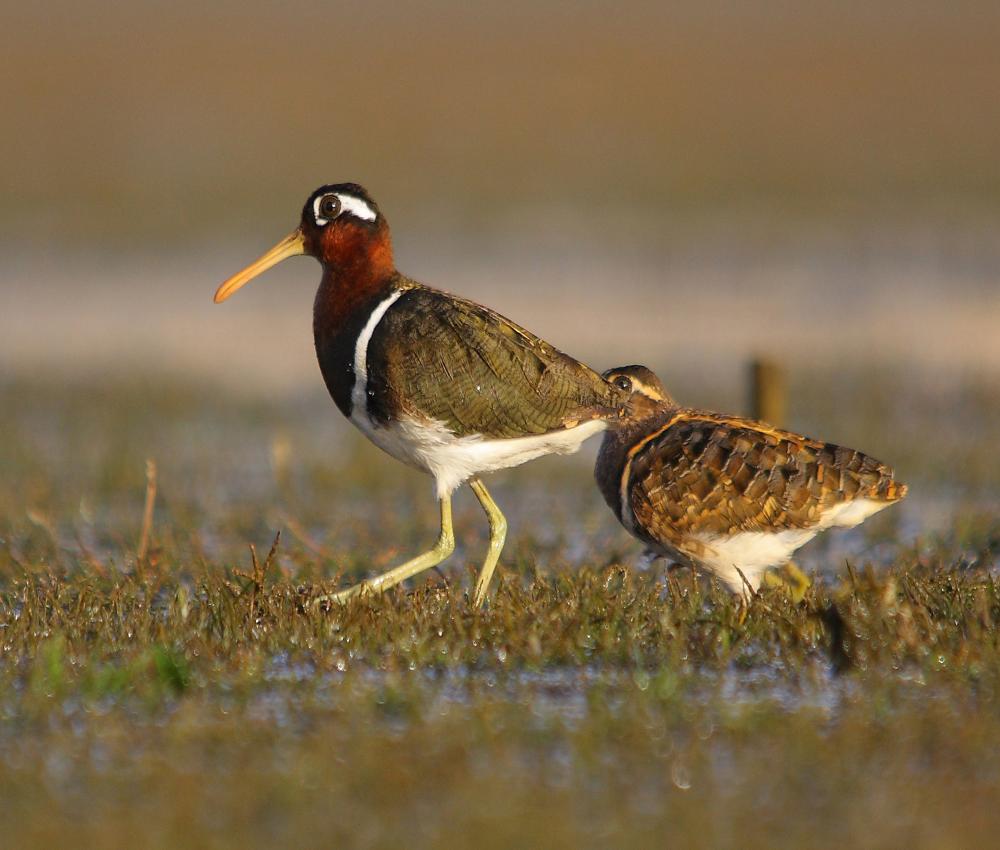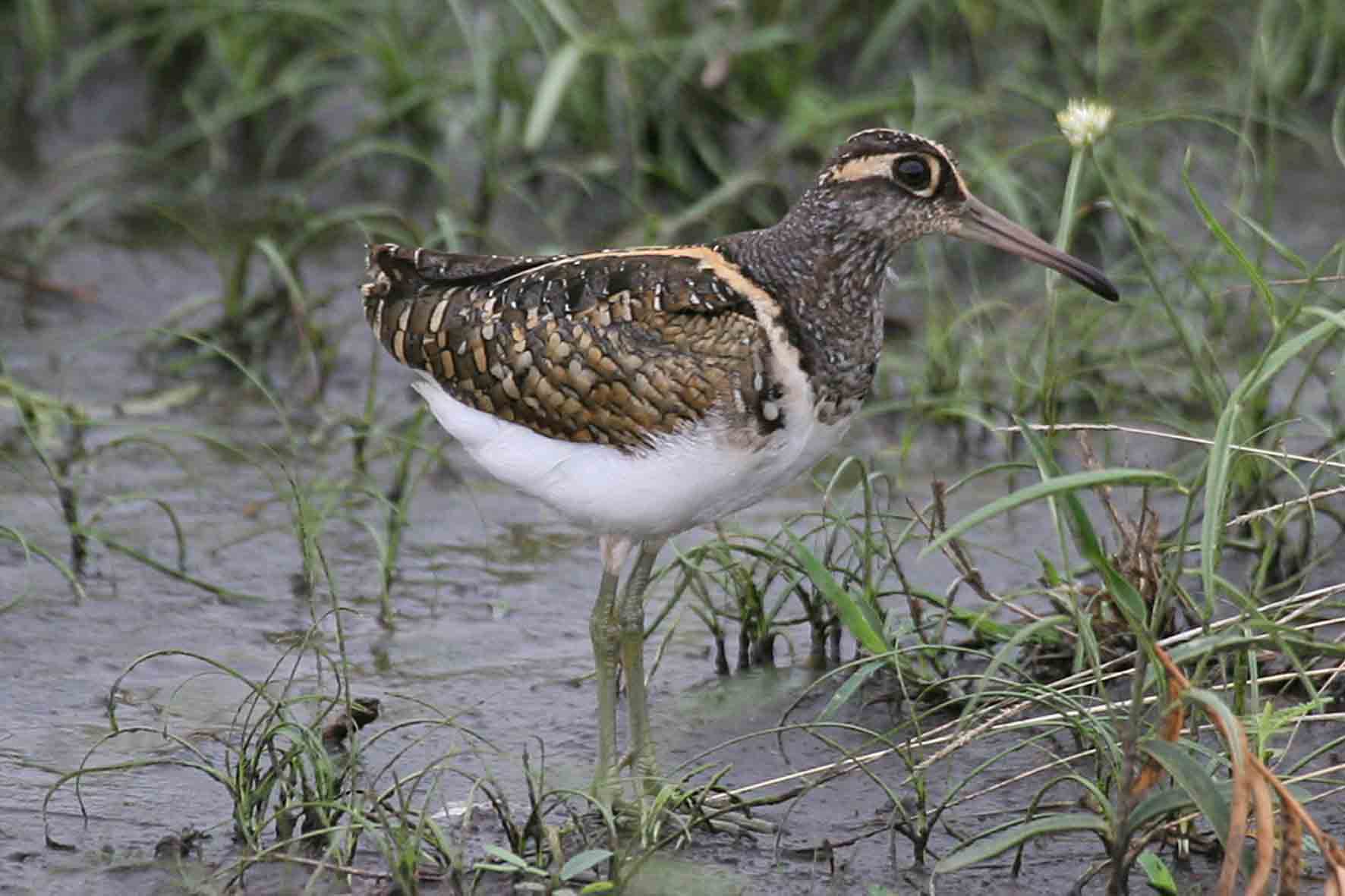
Rostratula benghalensis
SUBFAMILY
Rostratulinae
TAXONOMY
Rostratula benghalensis Linnaeus, 1758, Asia. A study published
in 2000 recommended that R. australis demanded species-level
recognition. Two subspecies.
OTHER COMMON NAMES
English: Painted snipe, African painted snipe; French:
Rhynchйe peinte; German: Goldschnepfe; Spanish: Aguatero
Bengalн.
PHYSICAL
CHARACTERISTICS
9–10.9 in (23–28
cm); female 3.2–6.7
oz (90–190 g), male
3.2–6.0 oz (90–170
g). Female has rufous
head and neck
with bronze-green
upperparts and
wings, whereas male
has ashy-gray head
and heavily goldenspotted
upperparts. Both sexes have largely white underparts,
pale eye patches, a crown stripe, and a mantle V. Juvenile
largely resembles adult male.
DISTRIBUTION
Madagascar and Sub-Saharan Africa, with the exception of the
Congo Basin. To the east, it also occurs through South and
Southeast Asia, north to Japan and extreme southeast Russia,
east through the Philippines and Indonesia. The form australis
occurs in south Australia, Victoria, New South Wales, and
parts of Queensland, with sporadic records from elsewhere in
north Australia and west Australia.
HABITAT
Lowland wetlands, including human-made and human-modified
areas.
BEHAVIOR
Solitary or in small groups. Chiefly crepuscular (active at twilight)
and partially nocturnal.
FEEDING ECOLOGY AND DIET
Omnivorous, probing mud or wading in shallow water in
search of insects, crustaceans, seeds, etc.
REPRODUCTIVE BIOLOGY
Polyanadrous or monogamous. Nests are usually solitary.
Breeds year-round, chiefly following rains in Africa. Generally
lays four eggs in shallow cup nest, concealed in marshy areas.
Incubation, by male, 15–21 days, but fledging period unknown.
Chicks precocial and leave the nest a short time after hatching;
usually cared for by male alone.
CONSERVATION STATUS
Widespread, can range from uncommon to frequent, but often
locally common. Formerly widely hunted, especially in European
colonies. Declining in some areas due to wetland drainage
and drought conditions. Australian population of serious conservation
concern and may require IUCN listing as
either Vulnerable or Endangered.
SIGNIFICANCE TO HUMANS
Principally known to sport hunters, but apparently of little significance
to local human populations.
Photo Gallery of - Greater painted snipe




 Animalia Life
Animalia Life